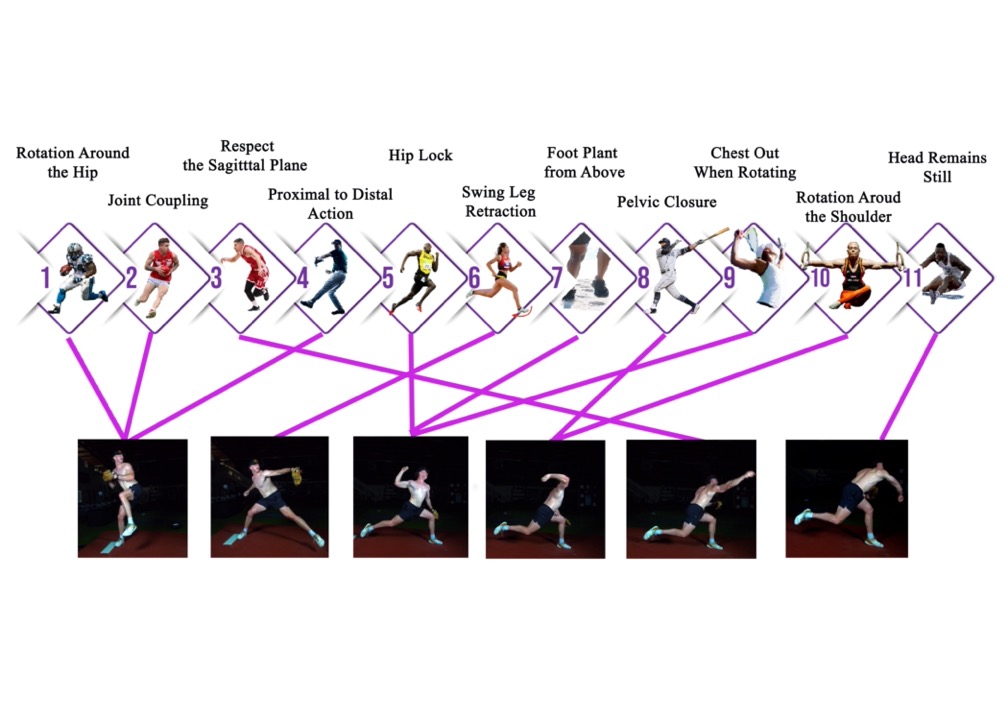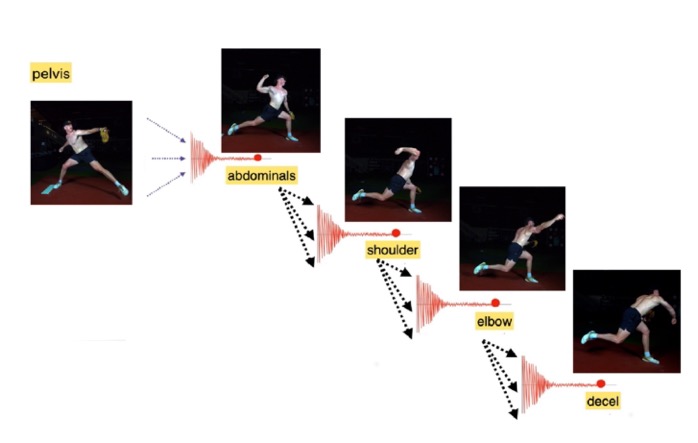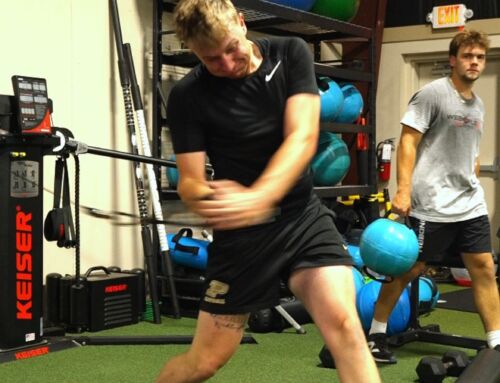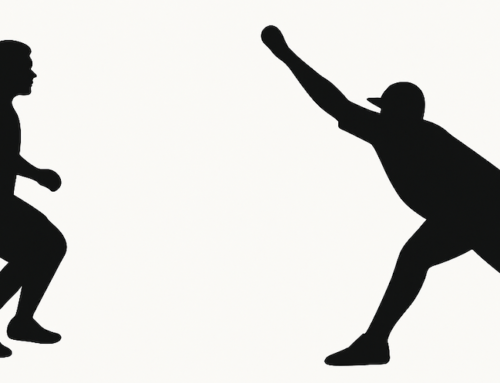
In baseball and sports in general, athletes and coaches are always seeking that competitive edge—whether it’s increasing velocity, improving command, or reducing injury risk. One of the key elements in modern training approaches is a concept called self-organization. It’s a principle borrowed from the study of dynamic systems and is now helping shape how athletes train, move, and optimize their performance in ways that traditional methods have not fully captured.
Self-organization refers to the body’s ability to naturally find its most efficient movement patterns without external control or micromanagement. Instead of rigid, mechanical repetitions, it’s the idea that through adaptable practice and exposure to different environments, the body will adjust and perform in the most efficient way possible. Let’s dive deeper into how this process works and how it can be applied to training to improve performance and reduce the risk of injury.
What is Self-Organization?
Self-organization is a phenomenon observed in many areas of life, from nature to human behavior. It occurs when individual components of a system interact with one another to create organized, complex patterns or behaviors without centralized control. This concept can be applied to physical, chemical, and biological systems—including how the human body moves.
Think about how dunes form in a desert. Wind lifts grains of sand and moves them into small mounds. As these mounds grow, they influence the wind patterns, causing even more sand to gather. The dunes grow larger and larger, but no one grain of sand or gust of wind “decides” how the dunes form—they emerge naturally through interaction.
Similarly, the body operates as a complex system. When you throw a baseball, for instance, your body naturally coordinates the movements of your legs, hips, torso, and arm to generate power and accuracy. No single part of your body acts in isolation—it's the interaction between these parts that creates the overall movement.
This process of self-organization means that movement patterns don’t need to be rigidly controlled by conscious thought. Instead, they emerge naturally as your body adapts to the task at hand. Your muscles, joints, and nervous system work together to produce efficient movement patterns based on the demands of the environment and your internal state.
How Self-Organization Applies to Athletes
For athletes, self-organization is essential. Traditional coaching often focuses on prescribing exact movements and mechanics—repeating the same motion over and over with the goal of achieving “perfect” mechanics. But this approach can limit adaptability and increase the risk of injury. When athletes are trained to follow a set of rigid mechanics, they may struggle to adapt to different game situations, fatigue, or environmental factors.
Take a pitcher, for example. If a coach drills a pitcher to repeat the same delivery every time, it might work well in controlled practice settings. But in a game, the pitcher might face changing conditions—like throwing on a windy day, pitching after fatigue sets in, or adjusting to different mound surfaces. A rigid, mechanical approach might break down in these situations, leading to poorer performance or injury.
By allowing for self-organization, athletes can learn to adapt to various conditions and still perform at a high level. Rather than trying to perfectly repeat the same movement every time, athletes are encouraged to explore slight variations in their mechanics to find the most effective and efficient way to move based on the situation.
The Role of Simple Rules in Self-Organization
Self-organization doesn’t mean chaos—it’s governed by simple rules that guide how movement patterns emerge. Just like a flock of birds can fly in perfect synchronization without a leader, human movement is organized around basic principles. For example, birds follow simple rules like maintaining a certain distance from their neighbors and matching their speed. These rules lead to the organized, dynamic movement of the flock.
In sports, simple rules govern how your body moves. These include:![]()
– Minimum Jerk: Your body will naturally try to minimize sudden changes in movement to avoid unnecessary force and strain.
– Minimum Torque Change: The body tries to avoid extremes in joint movement, operating efficiently within a controlled range to prevent injury.
– Minimum Processing: Your body seeks to minimize the amount of conscious thought required to perform a movement, relying instead on subconscious processes to execute complex tasks.
– Minimum Energy Cost: The body tends to choose movements that require the least energy to complete, conserving energy for longer and more intense periods of activity.
These rules allow your body to adapt in real-time, making movements smoother, more efficient, and less likely to result in injury.
How Self-Organization Helps Prevent Injury
One of the biggest benefits of using self-organization in training is its ability to reduce the risk of injury. Traditional training methods often rely on repetitive drills that force athletes into rigid, mechanical patterns. Over time, this repetition can lead to overuse injuries, as the same muscles and joints are stressed in the same ways over and over again.
When you allow the body to self-organize, you introduce variability into your movements. This variability helps distribute the stress across different muscles and joints, reducing the strain on any one area. For example, a pitcher who uses slightly different arm angles and body positions for each throw can avoid putting repeated stress on the same tissues, lowering their risk of shoulder or elbow injuries.
Additionally, self-organization allows for adaptive movement strategies. If a muscle or joint becomes fatigued during a game, the body can adjust its mechanics on the fly, using different muscles to accomplish the same task. This adaptability is crucial for avoiding injuries, especially in high-intensity sports where fatigue is a constant factor.
Training for Self-Organization: How to Apply It
So, how can athletes and coaches train to optimize self-organization? Here are some key strategies to incorporate into your training routine:
1. Create a Dynamic Environment
Introduce variability into your training. Instead of always practicing under the same conditions, change things up. Practice throwing from different positions, at different speeds, and under different levels of fatigue. Train in various weather conditions or use different equipment. This dynamic environment encourages your body to adapt and self-organize based on the current situation.
2. Embrace Movement Exploration
Encourage athletes to explore different ways of moving. Rather than drilling the same mechanics over and over, let them experiment with different arm slots, body positions, and timing strategies. This freedom allows athletes to find what works best for them and helps them become more adaptable in real-game situations.
3. Focus on Attractors (foundational movement principles), Not Perfection of Technique 
Teach athletes the core principles of movement—balance, coordination, and timing—rather than focusing on perfect mechanics. If an athlete understands how to move their body efficiently, they will naturally self-organize their movements to match the demands of the game.
4. Use Constraints to Guide Movement
One way to promote self-organization is by using constraints. This could mean changing the goal of the activity, reducing the time to react, or altering the environment in some way that forces athletes to adapt. By constraining certain aspects of movement, you push the body to find new, efficient ways to complete a task.
5. Prioritize Recovery and Adaptability
Since self-organization depends on the body’s ability to adapt, recovery becomes critical. Overtraining can reduce the body’s capacity to adjust, leading to breakdowns in performance and increased injury risk. Incorporate rest, recovery exercises, and flexibility training to ensure the body is always ready to adapt.
Self-Organization in Baseball
Let’s bring this concept back to baseball. A pitcher who embraces self-organization will develop adaptability. Instead of aiming to perfectly repeat the same pitch, they will be comfortable making minor adjustments based on the situation—whether it’s adjusting their grip in wet conditions or subtly changing their load and ride to compensate for fatigue.
The result? Improved performance and a lower chance of injury. Self-organization helps pitchers develop a “toolbox” of movement strategies they can call upon in different situations. It’s not about perfection—it’s about being adaptable and efficient.
At The ARMory, we understand that how you learn is just as important as what you learn. By focusing on cutting-edge principles like self-organization, we help athletes develop high-level skills in a way that promotes longevity and resilience.
If you’re tired of the same old approach and ready to “Overthrow the Status Quo,” give us a call at 866-787-4533 and start the training process that will unlock new levels of performance and open doors you never thought possible.

Randy Sullivan, MPT, CSCS CEO, Florida Baseball ARMory




